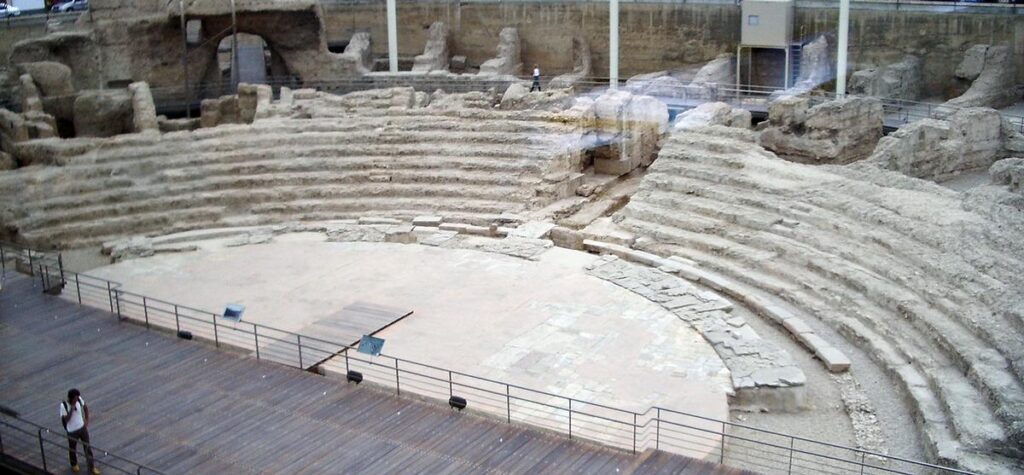Nestled in the heart of Zaragoza, Spain, the Roman Theatre stands as a testament to the city’s rich historical tapestry. This ancient site offers a unique glimpse into the past, where Roman culture and architecture come alive amidst the bustling modernity of Zaragoza. Whether you’re a history buff or simply looking for an intriguing stop on your Spanish adventure, the Roman Theatre is a must-see.
What to See
The Roman Theatre of Zaragoza is an archaeological gem that transports visitors back to the 1st century AD. As you step into the site, you’ll be greeted by the impressive remains of what was once a grand venue for entertainment. The theatre could originally accommodate around 6,000 spectators, making it one of the largest in Roman Hispania. Today, you can explore the semi-circular seating area, the orchestra pit, and the stage, all of which have been carefully preserved and partially reconstructed to give visitors a sense of its original grandeur.
A modern museum adjacent to the theatre provides additional context, showcasing artifacts discovered during excavations. Interactive displays and informative panels help visitors understand the significance of the theatre in Roman society and its role in the cultural life of ancient Zaragoza, then known as Caesaraugusta.
A Bit of History and Interesting Facts
The Roman Theatre was constructed during the reign of Emperor Tiberius, around 15-16 AD. It was part of a larger complex of public buildings that included a forum and baths, reflecting the importance of Zaragoza as a Roman colony. The theatre was used for various performances, including plays, musical events, and possibly even gladiatorial contests.
Interestingly, the theatre was rediscovered relatively recently, in 1972, during construction work in the area. Its excavation and subsequent preservation have provided valuable insights into Roman urban planning and entertainment. The site is now protected as a cultural heritage monument, allowing visitors to appreciate its historical significance.
One fascinating aspect of the theatre is its acoustics. The design of the seating and stage area was carefully planned to enhance sound projection, allowing actors’ voices to reach the entire audience without modern amplification. This architectural ingenuity is a testament to the advanced engineering skills of the Romans.
How to Get There and Tips for First-Time Visitors
Zaragoza is well-connected by train and bus, making it easily accessible from major Spanish cities like Madrid and Barcelona. Once in Zaragoza, the Roman Theatre is located in the city center, within walking distance of other attractions such as the Basilica de Nuestra Señora del Pilar and the Aljafería Palace.
For first-time visitors, it’s advisable to wear comfortable shoes, as the site involves some walking and uneven surfaces. The theatre is open year-round, but visiting during the spring or fall offers pleasant weather for exploring. Guided tours are available and highly recommended, as they provide deeper insights into the history and significance of the site.
If you’re planning to visit other historical sites in Zaragoza, consider purchasing a combined ticket, which offers access to multiple attractions at a discounted rate. This is a great way to make the most of your time in the city and immerse yourself in its rich cultural heritage.








